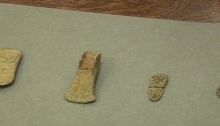The South Sea Bubble Collapse of 1720 and its Effect in Ireland
Introduction: The South Sea Bubble was a speculative bubble in the early 18th century involving the shares of the South Sea Company, a British international trading company that was granted a monopoly in trade with Spain’s colonies in South America and the West Indies as part of a treaty made after the War of the…









